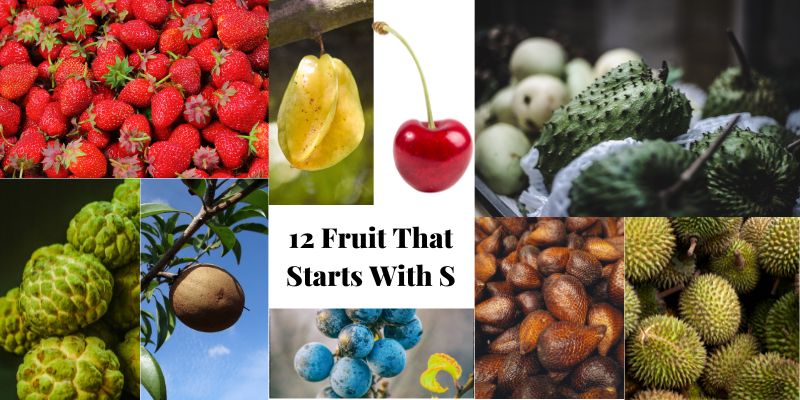When it comes to fruits, there are a plethora of options to choose from. Some fruits, however, have names that start with specific letters, adding a unique charm to their presence. In this article, we will dive into the world of fruit that starts with S, exploring its flavors, nutritional benefits, and ways to incorporate them into your diet. Let’s discover the fantastic five fruits that begin with the letter “S”.
List of 16 Fruit That Starts With S
1. Strawberries

Ranked as one of the most popular fruits worldwide, strawberries are a delightful treat loved by many. These vibrant red berries are not only visually appealing but also boast a sweet and tangy flavor. Packed with vitamin C, fiber, and antioxidants, strawberries provide numerous health benefits. They promote heart health, support the immune system, and may even help regulate blood sugar levels. Whether eaten fresh, added to salads, or used in desserts, strawberries are versatile fruit that can be enjoyed in various ways.
2. Starfruit
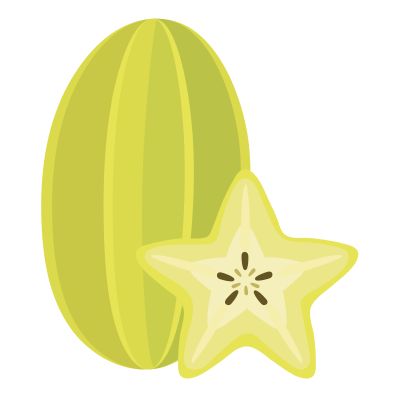
Native to Southeast Asia, starfruit, also known as carambola, is an exotic fruit with a distinctive star-like shape when sliced. The fruit has a juicy and crisp texture with a flavor that ranges from sweet to slightly tart. Starfruit is a great source of vitamin C, antioxidants, and dietary fiber. It also contains a natural compound called oxalic acid, which may help maintain healthy kidney function. Enjoy starfruit as a refreshing snack, use it as a garnish in salads, or incorporate it into juices and smoothies.
3. Satsuma
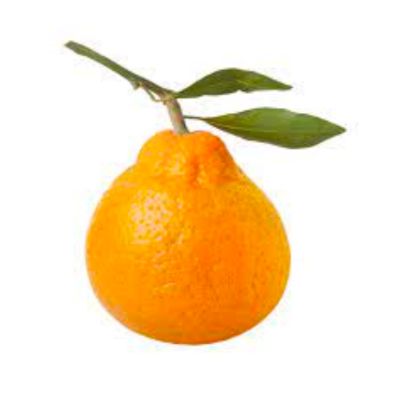
Satsuma is a type of mandarin orange originating from Japan. This small, easy-to-peel citrus fruit is popular for its sweet and juicy segments. Satsumas are an excellent source of vitamin C and provide essential nutrients like folate and potassium. Their bright flavor and refreshing aroma make them a delightful addition to fruit salads, desserts, and even savory dishes. Satsumas are also commonly enjoyed during the winter months, adding a burst of sunshine to cold days.
4. Sugar Apple
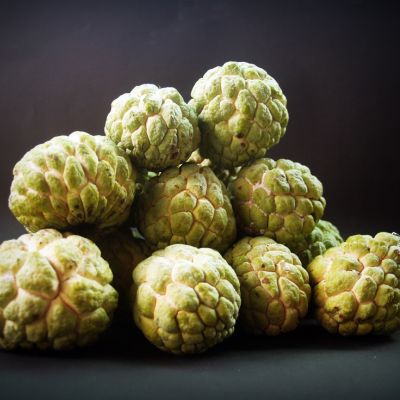
Also known as sweetsop or custard apple, the sugar apple is a tropical fruit with a unique appearance. It has a bumpy green exterior and creamy white flesh that resembles custard. Despite its name, the sugar apple is relatively low in sugar compared to other fruits. It is rich in vitamin C, dietary fiber, and several essential minerals. The fruit offers a delicate and sweet flavor, often described as a blend of banana and pineapple. Enjoy it fresh, blend it into smoothies, or use it as a delicious ingredient in desserts.
5. Sapodilla
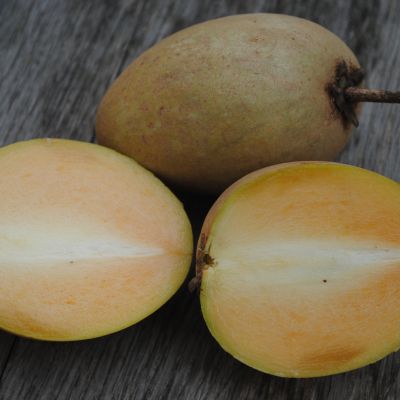
Sapodilla, also known as chikoo, is a tropical fruit native to Mexico and Central America. This fruit has a rough, brown exterior and sweet, grainy flesh that is incredibly delicious. Sapodilla is a good source of dietary fiber, antioxidants, and vitamins like vitamin A and vitamin C. It offers a unique caramel-like flavor with hints of pear and brown sugar. Whether enjoyed on its own, added to smoothies, or used in desserts, sapodilla is a delightful fruit that can elevate your culinary creations.
6. Soursop
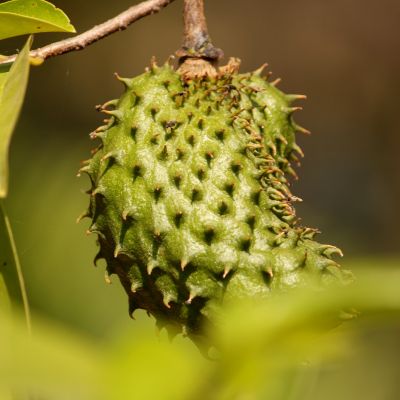
Soursop, also known as Graviola, is a tropical fruit with a spiky green exterior and soft, creamy flesh. Its flavor profile is a unique blend of tangy and sweet, reminiscent of a combination of pineapple and strawberry. Soursop is a rich source of antioxidants, vitamins C and B, fiber, and minerals. It is believed to possess various health benefits, such as supporting the immune system and promoting digestive health. Enjoy soursop in smoothies, or ice creams, or simply indulge in its refreshing natural form.
7. Sharon Fruit
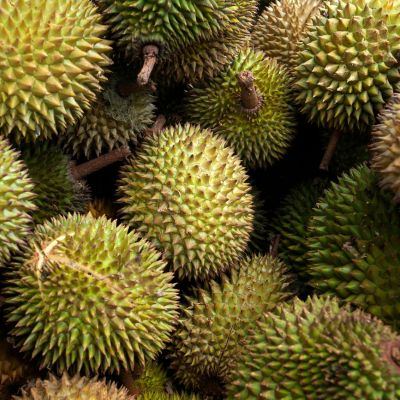
Sharon fruit, also known as persimmon or kaki fruit, is a vibrant orange fruit with a slightly flattened shape. It has a sweet, honey-like flavor and a smooth, custard-like texture when fully ripe. Sharon fruit is an excellent source of dietary fiber, vitamin C, and manganese. It also contains beneficial plant compounds, such as catechins and betulinic acid, which have antioxidant and anti-inflammatory properties. Enjoy Sharon fruit on its own, slice it into salads, or use it in baking for a unique twist to your favorite recipes.
8. Salak
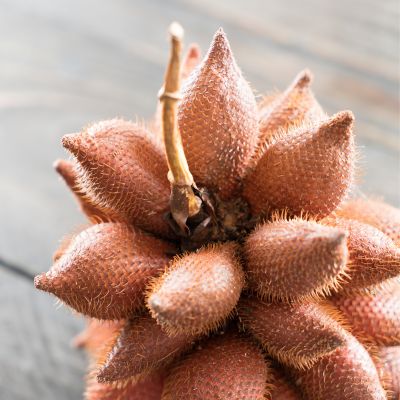
Salak, also known as snake fruit, is a small, reddish-brown fruit native to Indonesia. It gets its name from the scaly appearance of its skin. Inside, it reveals three segments of creamy, sweet-sour flesh with a texture reminiscent of an apple. Salak is a good source of dietary fiber, vitamins, and minerals. It is particularly rich in potassium, which is essential for maintaining proper heart function and regulating blood pressure. Peel off the scaly skin and enjoy the unique taste and texture of salak as a refreshing snack or add it to fruit salads and desserts.
9. Sloe
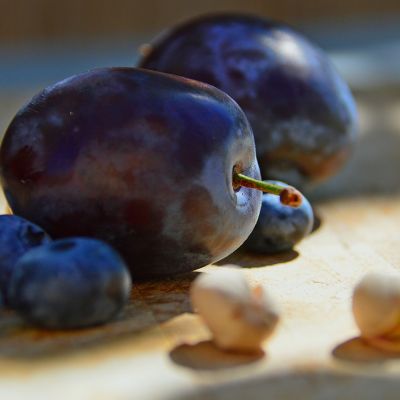
Sloe is a small fruit that grows on the blackthorn shrub and is primarily known for its use in making sloe gin. These deep purple fruits are quite tart and astringent when eaten raw, but they are commonly used in the production of liqueurs, jams, and desserts. Sloe berries are a rich source of antioxidants and are believed to have anti-inflammatory properties. While not typically consumed on their own, they can add a unique flavor and color to various culinary creations.
10. Strawberry Guava
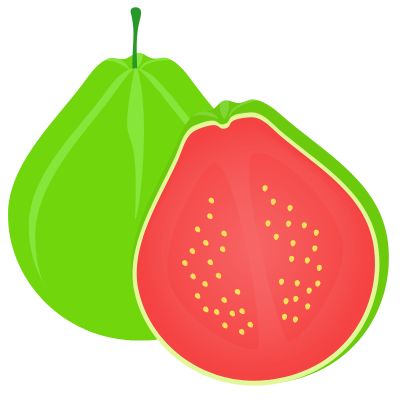
Strawberry guava, also known as cattley guava, is a small tropical fruit that resembles a miniature version of a pear. It has vibrant red or yellow skin and a sweet, juicy pulp that offers a delightful combination of strawberry and tropical flavors. Strawberry guava is a good source of vitamin C, dietary fiber, and antioxidants. It also contains essential minerals like potassium and calcium. The fruit’s high vitamin C content supports immune health, while its dietary fiber aids in digestion and promotes a feeling of fullness. The antioxidants in strawberry guava help protect the body against harmful free radicals.
Enjoy strawberry guava by eating it fresh, either on its own or added to fruit salads for a burst of tropical sweetness. The fruit can also be used in jams, jellies, and baked goods, adding a unique flavor twist to your recipes.
11. Snake Fruit
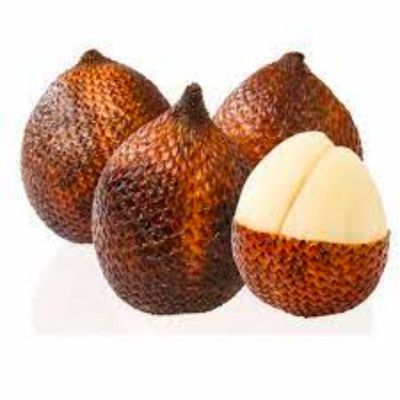
Snake fruit, also known as salak or sala, is a small tropical fruit native to Indonesia. It gets its name from the reddish-brown scaly skin that resembles snake scales. Once peeled, it reveals sweet and tangy flesh with a crunchy texture. Snake fruit is an excellent source of antioxidants, fiber, and minerals such as potassium and iron. It is believed to have digestive benefits and may contribute to maintaining healthy skin. Enjoy snake fruit as a snack, incorporate it into fruit salads, or try it in unique culinary creations.
12. Surinam Cherry
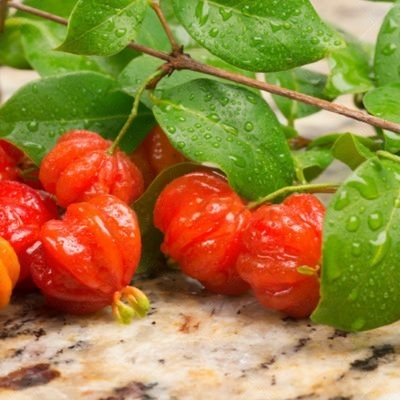
Surinam cherry, also known as pitanga or Brazilian cherry, is a small fruit that originates from South America. It has a vibrant red or orange color when ripe and offers a flavor that is both sweet and tart. Surinam cherry is an excellent source of vitamin C and antioxidants, which are beneficial for immune health and overall well-being. The fruit is often used to make jams, jellies, and desserts due to its unique taste. Enjoy Surinam cherry fresh, incorporate it into smoothies, or use it as a flavorful topping for desserts.
Incorporating These Fruits into Your Diet
To make the most of these three additional fruits that start with “S,” here are some suggestions for incorporating them into your diet:
Create a tropical fruit Platter
Combine sliced snake fruit, Surinam cherry, and strawberry pear for a vibrant and exotic fruit platter. Serve it as a refreshing snack or as an eye-catching dessert option.
Make a Snake Fruit Salsa
Dice snake fruit and combine it with diced tomatoes, onions, cilantro, lime juice, and a touch of chili for a unique and tangy salsa. Serve it with grilled meats, fish, or as a dip with tortilla chips.
Prepare a Surinam Cherry Smoothie
Blend Surinam cherry with your favorite fruits, yogurt, and a splash of coconut water for a delicious and antioxidant-rich smoothie. It’s a fantastic way to start your day or enjoy a refreshing midday treat.
Incorporate Strawberry Pear in Salads
Add sliced strawberry pear to green salads for a refreshing twist. Its crisp texture and mildly sweet flavor complement a variety of salad ingredients, such as mixed greens, goat cheese, walnuts, and balsamic vinaigrette.
Make Snake Fruit Chutney
Combine diced snake fruit with onions, garlic, ginger, vinegar, brown sugar, and spices to create a flavorful chutney. This tangy and sweet condiment pairs well with grilled meats, cheeses, and bread.
Try Surinam Cherry Jam
Utilize the unique flavor of Surinam cherries by making homemade jam. Cook the cherries with sugar and lemon juice until thickened, then store them in jars for a delightful spread on toast, pancakes, or scones.
Conclusion
As we conclude our exploration of fruits starting with the letter “S,” we have introduced three additional fruits with their own unique qualities. Snake fruit offers a crunchy texture and sweet-tangy flavor, Surinam cherry provides a balance of sweetness and tartness, and strawberry pear delights with its crispness and refreshing taste. Incorporating these fruits into your diet allows you to experience the diversity of flavors, enhance your culinary creations, and benefit from their nutritional value. So, don’t hesitate to explore the world of snake fruit, Surinam cherry, and strawberry pear, and savor the abundance of tastes they have to offer.
You may also like:
Fruit That Starts With H – Healthy Letter Diet
Major Side Effects of Eating Too Many Dragon Fruits
FAQs
Q:- What are the health benefits of tropical fruits?
Ans:- Tropical fruits, such as sapodilla, strawberry guava, soursop, and starfruit, offer numerous health benefits. They are rich in vitamins, minerals, antioxidants, and dietary fiber, which support immune health, digestion, and overall well-being. These fruits also provide a delicious way to incorporate essential nutrients into your diet.
Q:- How do I choose ripe snake fruit or salak?
Ans:- When selecting snake fruit, look for ones with firm, intact skin. The skin should be reddish-brown and have a dry texture. Avoid fruits with blemishes or soft spots. To check ripeness, gently squeeze the fruit – it should yield slightly. Additionally, a strong, sweet aroma indicates that the snake fruit is ripe and ready to be enjoyed.
Q:- Can I eat the skin of starfruit or carambola?
Ans:- Yes, the skin of starfruit is edible and safe to eat. However, some people prefer to remove the thin, waxy outer layer before consuming it. It is a matter of personal preference. Ensure that you wash the starfruit thoroughly before eating, especially if it has been treated with any preservatives or wax.
Q:- Are there any precautions when consuming soursop or Graviola?
Ans:- While soursop is generally safe to consume, it is recommended to enjoy it in moderation. The seeds and leaves of the soursop fruit should not be eaten, as they contain toxins. Additionally, if you have any underlying medical conditions or are taking medications, it is best to consult your healthcare provider before incorporating soursop into your diet.
Q:- How can I use strawberry guava in recipes?
Ans:- Strawberry guava can be used in various culinary creations. It adds a unique tropical flavor to fruit salads, smoothies, jams, and jellies. You can also incorporate it into baked goods like cakes, muffins, or tarts for a delightful twist. Get creative and experiment with different recipes to fully enjoy the taste and versatility of strawberry guava.
